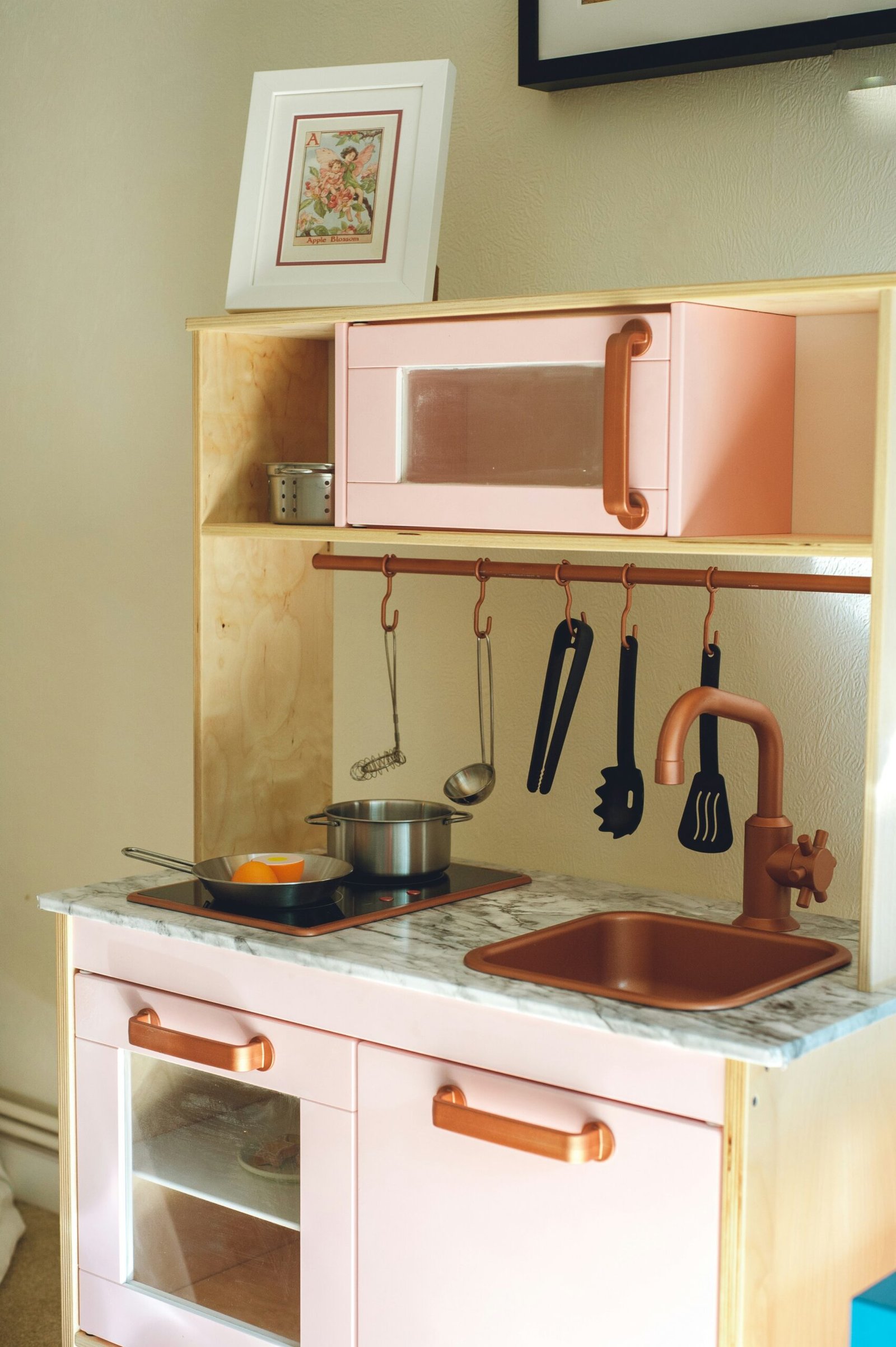Introduction
Play kitchens are an essential toy for facilitating imaginative play in children. They offer young ones a safe space to engage in pretend cooking, which not only stimulates creativity but also fosters critical developmental skills. Through role-playing in a play kitchen, children are encouraged to explore various scenarios, enhancing their cognitive abilities and social interactions as they engage with peers or parents in collaborative activities.
As children navigate through the different components of a play kitchen, such as utensils, food items, and appliances, they develop fine motor skills essential for everyday tasks. For instance, stirring, chopping, and serving food in a play setting can strengthen hand-eye coordination and dexterity. Moreover, engaging in this type of role play allows children to simulate real-life experiences, providing them with a deeper understanding of daily routines and responsibilities. This educational aspect of play kitchens contributes significantly to a child’s early learning and helps lay the foundation for practical life skills.
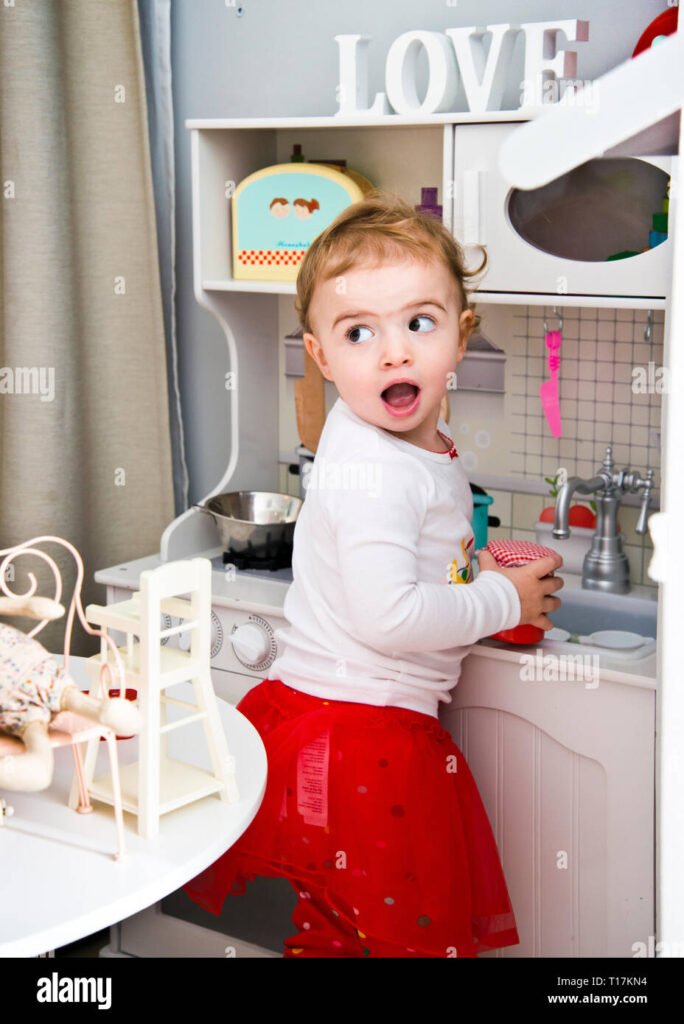
With a variety of models available on the market, parents may wonder which play kitchen best suits their child’s needs. Our upcoming comparison will highlight some of the top models, considering factors such as size, features, price, and educational value. Importantly, budget-conscious parents will find an array of affordable options on platforms like eBay, making it feasible to access quality play kitchens without overspending. In addition to standard reviews, we will include affiliate links to trusted sellers, ensuring you can conveniently find and purchase your chosen model online. Join us as we dive deeper into the wonderful world of play kitchens and uncover the best options for your child’s playtime experience.
Criteria for Choosing the Best Play Kitchen
Selecting the best play kitchen for your child requires careful consideration of several essential criteria. Understanding these key aspects will enable parents to make informed choices and identify models that stand out in both functionality and safety. One of the primary factors to assess is the size of the play kitchen. It should be appropriately scaled for the available space in your home and suit the child’s age and height. An ideal play kitchen allows for comfortable interaction, ensuring children engage with the setup without strain.
Material selection is another critical criterion. Most play kitchens are constructed from either wood or plastic. While wooden models often offer durability and aesthetic appeal, ensuring they are sustainably sourced is paramount. On the other hand, plastic kitchens tend to be lighter and easier to clean but may not always reflect the same longevity. Evaluating the quality of materials used helps in determining how well a kitchen will stand up to the wear and tear of adventurous play.
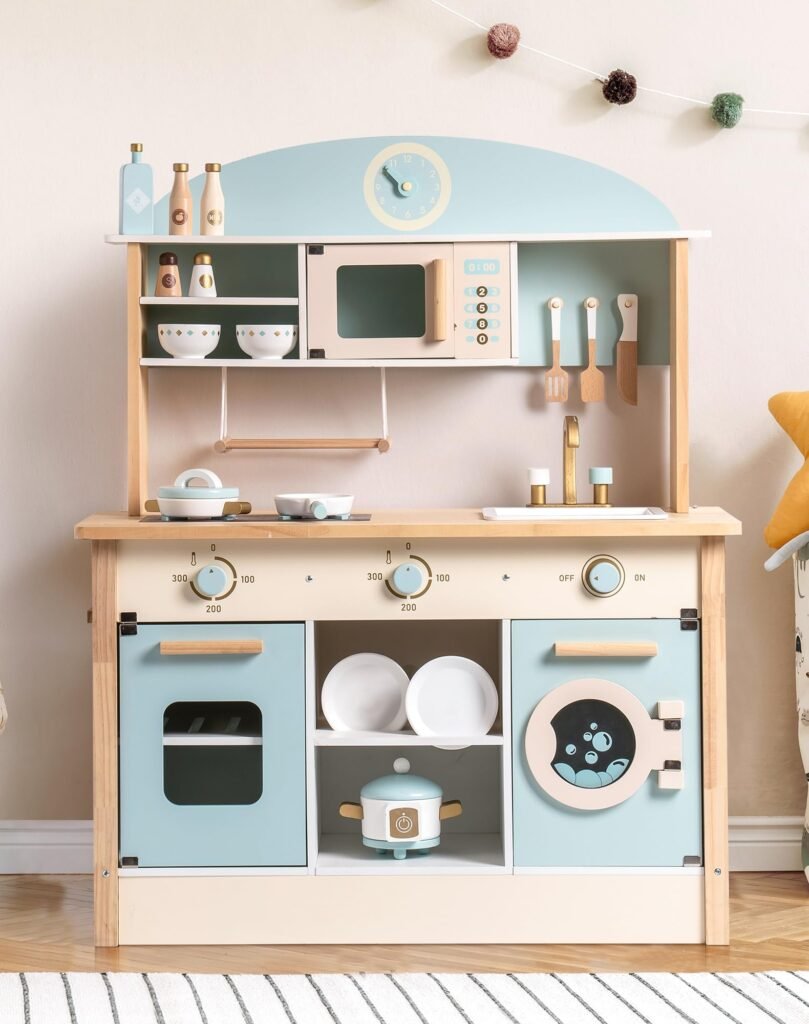
Safety features also deserve scrutiny. Parents should look for edges and corners that are rounded to minimize injury risks, and non-toxic paint and finishes are essential for child-friendly products. Additionally, models with sturdy construction reduce the chance of tipping or collapsing during use. Furthermore, durability is an important aspect that influences both long-term satisfaction and financial investment. A robust kitchen withstands frequent play, ensuring it remains a staple in your child’s imaginative landscape for years to come.
Finally, consideration of included accessories can enhance the overall play experience. Some kitchens come fully equipped with utensils, pots, and play food, while others allow for customization with optional additional sets. Each of these aspects, when thoughtfully evaluated, helps pinpoint the best play kitchen that will not only entertain but also foster creativity and learning in children.
Top Play Kitchen Models: Head-to-Head Comparison
When selecting the ideal play kitchen for children, it’s essential to consider various aspects, including features, design, user experiences, and overall performance. This section will compare several prominent play kitchen models to provide a clearer understanding of their strengths and weaknesses.
One popular model is the KidKraft Ultimate Corner Play Kitchen, renowned for its spacious design and attention to detail. This play kitchen comes equipped with a wide range of accessories, including pots, pans, and utensils, providing children with a realistic cooking experience. The aesthetic appeal of this model, with its vibrant colors and charming wooden construction, makes it a standout option. However, some users report that assembly can be time-consuming and requires multiple tools.
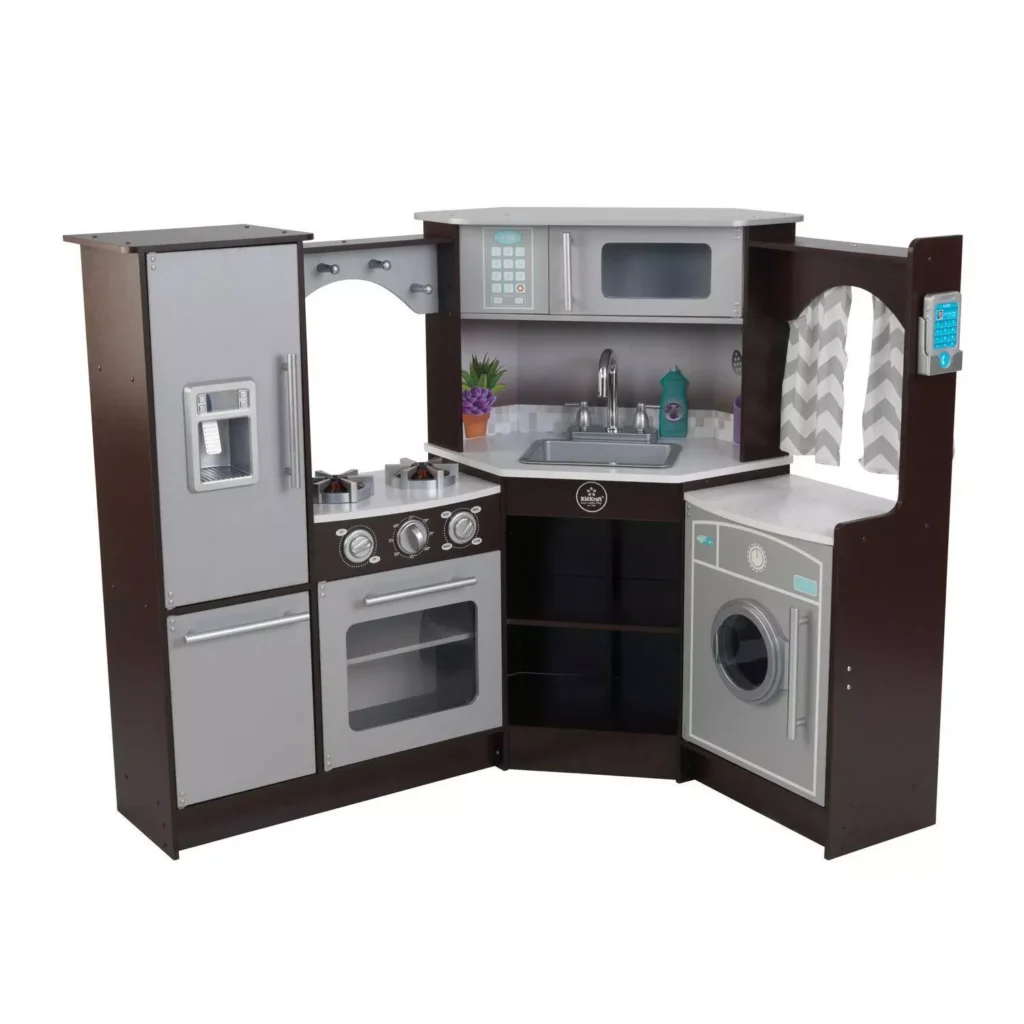
Next, we have the Step2 Lifestyle Custom Kitchen, featuring a more compact design ideal for smaller spaces. This model is designed with durability in mind, made from high-quality plastic that withstands vigorous play. Users appreciate the interactive elements, such as electronic sounds and lights, adding to the children’s imaginative play. Conversely, some parents feel that the smaller countertop space limits the cooking experience for multiple children playing simultaneously.
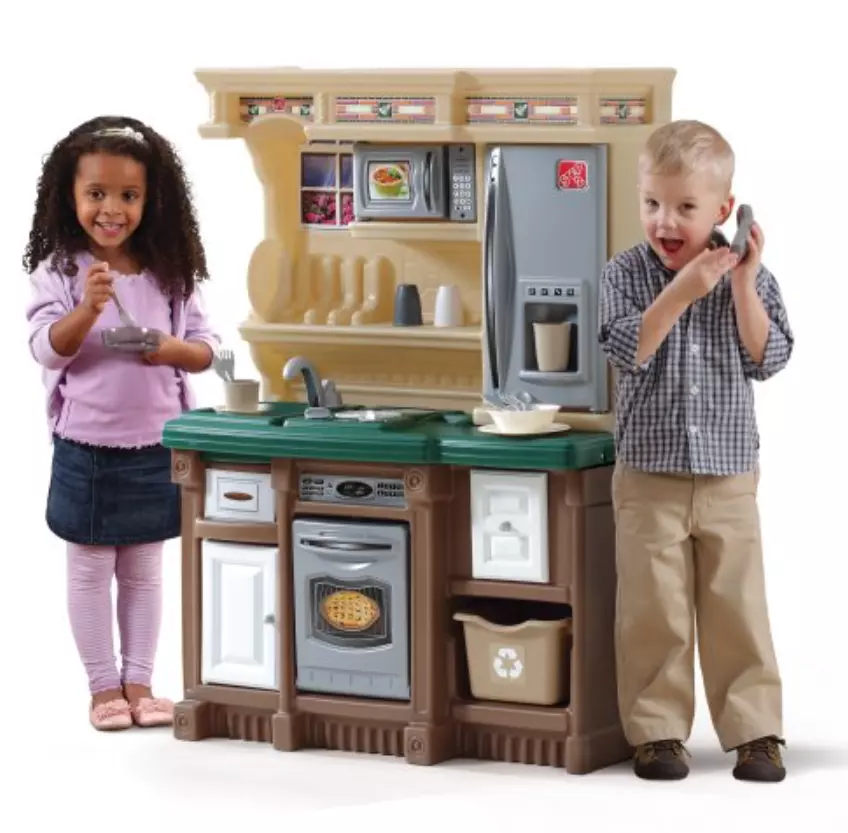
Another contender is the Melissa & Doug Wooden Chef’s Kitchen, which emphasizes a traditional wooden design that appeals to parents seeking a timeless aesthetic. This kitchen includes multiple stove burners, an oven, and an ample storage area, encouraging extensive pretend play. Parents have praised its sturdy construction; however, the absence of electronic features may deter children accustomed to more modern play kitchens.
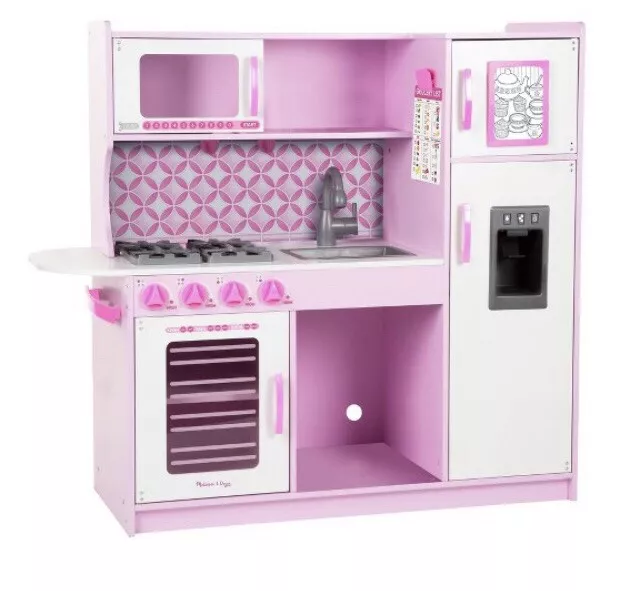
Budget-Friendly Kitchen Toys on eBay
When searching for budget-friendly play kitchen options, eBay offers a variety of quality toys that cater to different tastes and preferences. These kitchen toys provide an engaging way for children to emulate cooking while fostering creativity and imaginative play. Here are some noteworthy budget-friendly options available on eBay:
KidKraft Wooden Kitchen: This charming wooden play kitchen features an oven, refrigerator, and microwave, offering a realistic cooking experience. The bright colors and wooden design contribute to durability and aesthetic appeal. Priced between $75 and $100, it is ideal for children aged 3 and up. One downside is an assembly may require adult supervision, but the sturdy construction ensures long-lasting use.

Step2 Gourmet Kitchen Playset: This plastic play kitchen is compact yet packed with features. It includes an electronic stove with sounds, realistic burners, and multiple accessories. Priced around $110, it is designed for easy cleaning and can withstand rough play. A potential con is that it might not offer the same wooden feel as other models but is perfect for younger kids due to its lightweight.
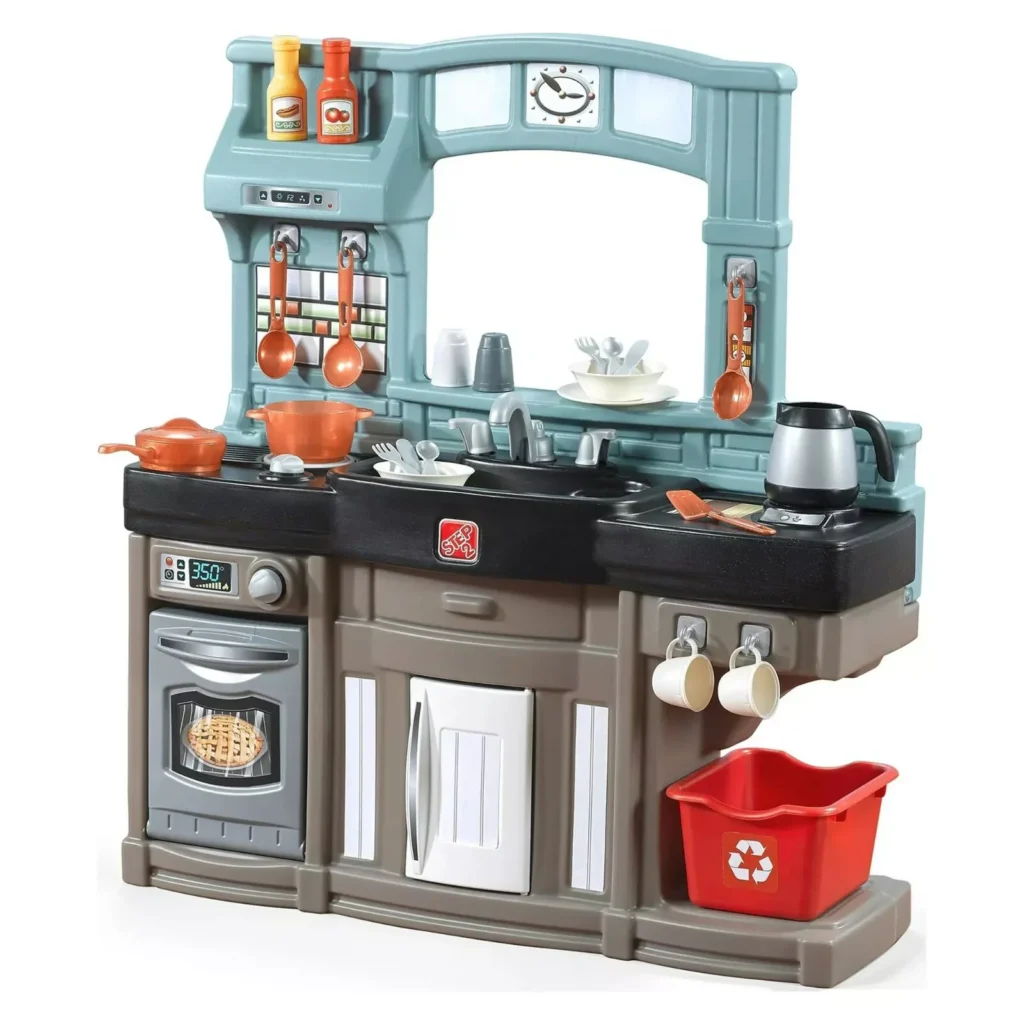
Melissa & Doug Wooden Chef’s Pretend Play Set: This set provides an excellent addition to an existing kitchen setup, featuring pots, pans, and utensils. Priced around $85, it encourages social play, sharing, and cooperation among young children. However, it lacks larger structures, so it functions better as an accessory rather than a standalone kitchen.
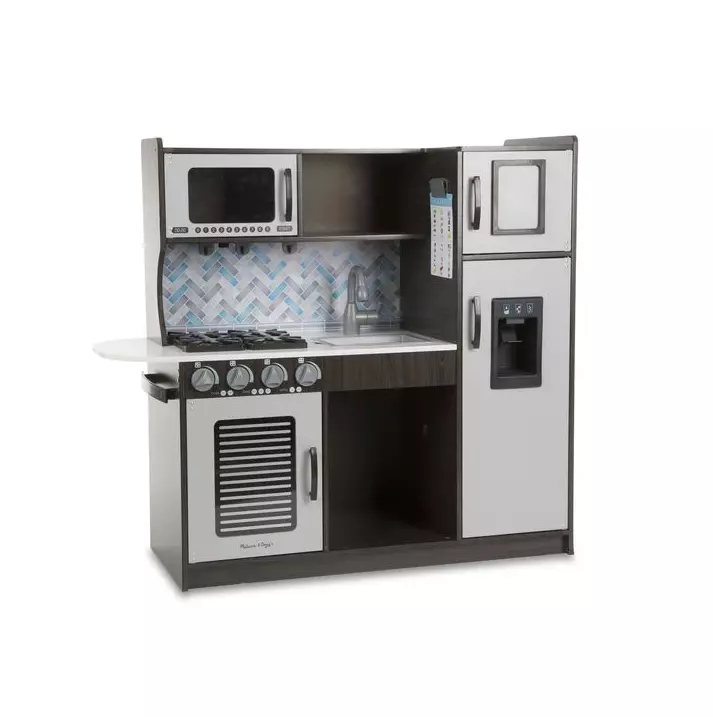
By incorporating these budget-friendly kitchen toys into your child’s playtime, you can provide countless hours of imaginative fun without exceeding your budget. These products serve as effective teaching tools that promote role-playing while remaining cost-effective options available through eBay.
Safety Considerations for Play Kitchens
When selecting a play kitchen for children, safety considerations play a crucial role. Parents and caregivers must be aware of the materials used in the construction of these toys, as some may contain harmful substances. It is essential to opt for play kitchens made from non-toxic, durable materials such as BPA-free plastic or sustainably sourced wood. Such options not only ensure the safety of little ones but also contribute to a more eco-friendly play environment.
Additionally, some play kitchens feature small parts that can pose choking hazards, particularly for younger children. It is important to consider the age recommendations provided by manufacturers. Most play kitchen sets are designed for children aged three years and older; however, caregivers should evaluate individual children’s maturity levels and habits to determine suitability. Carefully reading the product descriptions and safety guidelines can help in making an informed decision about which model is the safest for the intended age range.
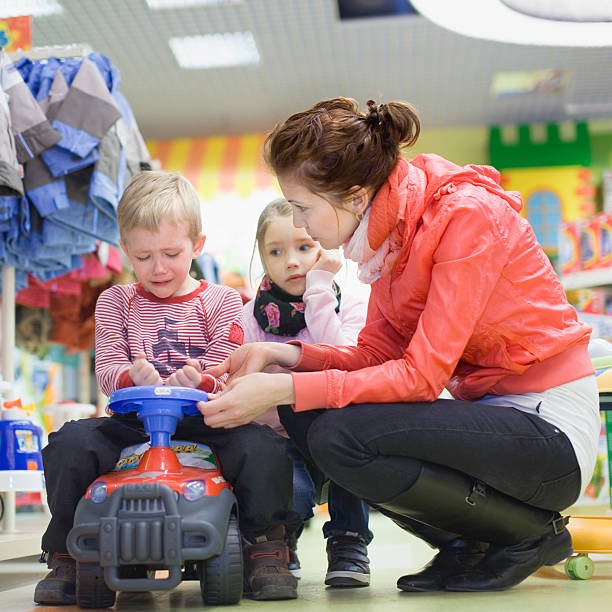
Supervision during playtime is another key aspect of ensuring child safety. Children often engage in imaginative play that could lead to the misuse of items, such as pretending to cook with small utensils or accessories. It is advisable for parents to actively participate in their child’s play or keep a watchful eye, particularly with younger age groups. An effective strategy includes setting clear boundaries about how the kitchen and its accessories should be used, helping children understand the importance of safety during their imaginative culinary adventures.
By carefully considering the materials, examining potential hazards, and promoting safe play practices, parents can confidently select a play kitchen that provides not only hours of enjoyment but also a secure play experience for their children.
Creative Play Ideas Using Play Kitchens
Play kitchens serve as a vital tool for enhancing children’s creativity and imaginative play. Engaging in role-playing while using these miniature kitchens provides a unique opportunity for children to experiment with different scenarios and characters. One way to stimulate creativity is to establish themed cooking scenarios. For instance, a “restaurant night” can involve setting the kitchen up as a bustling diner where kids learn to take orders, prepare meals, and serve customers. This setup not only fosters culinary skills but also encourages social interactions and communication.
Another creative endeavor involves cooperative play with peers. Children can take on various roles, such as chef, waiter, or customer, thus setting the stage for collaborative storytelling and teamwork. By engaging in group activities around their play kitchens, children develop essential social skills, such as sharing, taking turns, and problem-solving. Encourage them to create their own restaurant names or menus, which can lead to a deeper understanding of entrepreneurship and the importance of planning.

Furthermore, integrating educational components into play can significantly enhance its value. For example, parents can introduce basic counting and math concepts through measuring ingredients or setting a dinner table with a specific number of items. Encouraging kids to follow recipes also introduces them to sequential thinking and enhances their ability to follow instructions, which is a crucial life skill.
In addition to these structured ideas, giving children the freedom to create their own cooking projects can lead to unique and imaginative outcomes. They might invent a new dish or host a cooking show for their toys, blending creativity with storytelling. These enriching experiences will undoubtedly contribute to their cognitive development while ensuring that their time spent in the play kitchen is nothing short of imaginative and educational.
Customer Reviews and Testimonials
When selecting the best play kitchen for children, it’s crucial to consider insights from actual users. Customer reviews and testimonials can provide an invaluable perspective on the performance and enjoyment of various models. Parents frequently share their delight when their children engage with play kitchens that feature vibrant colors, realistic appliances, and ample space for creative play. For example, several reviews highlight the value of a kitchen equipped with authentic sounds, such as sizzling or boiling effects, which significantly enhance the imaginative experience for young chefs.
Many families echo a consensus that durability is another essential factor. A notable number of testimonials commend brands that offer robust materials, emphasizing that their play kitchens have withstood the test of time and rough play. Parents appreciate kitchens that can endure multiple years of enthusiastic use, often becoming a centerpiece for family playtime. One particular model received rave reviews for its sturdy construction and ability to remain attractive and functional despite extensive interactions with energetic children.
Conversely, some customers have voiced concerns regarding assembly instructions and initial setup. A few reports detail experiences where parents struggled to piece the kitchen together, leading to frustration. Reviews suggest that clearer instructions could greatly enhance the customer experience, helping families to enjoy their purchase more quickly. Positive feedback often emphasizes features such as easy-to-clean surfaces and removable components, highlighting aspects that parents find beneficial for maintenance and longevity.
Overall, customer testimonials provide a well-rounded picture of which play kitchen models resonate most with users. These real-life experiences illuminate how various features, from durability to play value, make particular models stand out in the crowded market of children’s toys, guiding prospective buyers in their decision-making process.
Conclusion and Final Recommendations
After a comprehensive analysis of various play kitchens, it is evident that selecting the right model hinges on several factors, including space, budget, and the age of the child. Our comparisons highlighted that while some play kitchens stand out due to their durability and functionality, others excel in terms of design and aesthetic appeal.
For families operating on a budget, the more economical options can still deliver a great experience without compromising quality. Models like the KidKraft Vintage Kitchen provide a perfect blend of affordability and features, offering essential tools and appliances for budding chefs without breaking the bank. This option is highly suitable for younger children who may require something simpler and easier to navigate.
On the other hand, if space is a consideration, wall-mounted or compact models, such as the Step2 Fun with Friends Cottage Kitchen, offer an ingenious solution. These kitchens save floor space while still providing a multitude of interactive components. Such designs allow for imaginative play, enabling children to engage in role-playing scenarios without overwhelming a small play area.
For those seeking greater longevity and creative experience, investing in a more advanced play kitchen, such as the Melissa & Doug Wooden Chef’s Kitchen, can be particularly rewarding. Though a higher-priced option, its sturdy construction and extensive features can withstand years of frequent use and encourage more elaborate play.
In summary, determining the ideal play kitchen varies according to personal circumstances and preferences. Each of the reviewed models caters to different needs and budgets. By considering the insights shared in this analysis, parents can make an informed choice, ensuring that they select a play kitchen that will foster creativity and provide endless joy for their children.
Affiliate Links and Further Resources
To assist you in your exploration of the best play kitchens for kids, we have provided affiliate links to some of the featured models highlighted in our comparison. By using these links, you can conveniently browse and purchase these fantastic play kitchens, which are designed to enhance imaginative play and nurture creativity. Each play kitchen listed has been selected based on quality, safety, and overall value to ensure that you are making the best investment for your child’s developmental activities.
Additionally, for budget-conscious families looking for affordable options, eBay offers a wide selection of budget-friendly toys, including various play kitchens. We encourage discussions with other parents and caregivers about their experiences and insights when selecting play kitchens for children, as this can significantly enhance your purchasing decision.
Furthermore, if you’re seeking additional guidance on choosing the right play kitchen or maximizing its use in your child’s playtime, we have compiled a series of resources that can be beneficial. These resources include in-depth articles, expert reviews, and tips on creative ways to engage with play kitchens, transforming simple cooking play into enriching learning experiences. We believe it’s essential for parents to feel equipped with the knowledge necessary to make informed choices that align with their child’s interests and developmental needs.
By following the provided links and exploring these valuable resources, you will not only find the perfect play kitchen for your child but also discover innovative ways to enrich their playtime. Embrace the journey of selecting a play kitchen that inspires creativity and joy, making a lasting impact on your child’s imaginative world.
